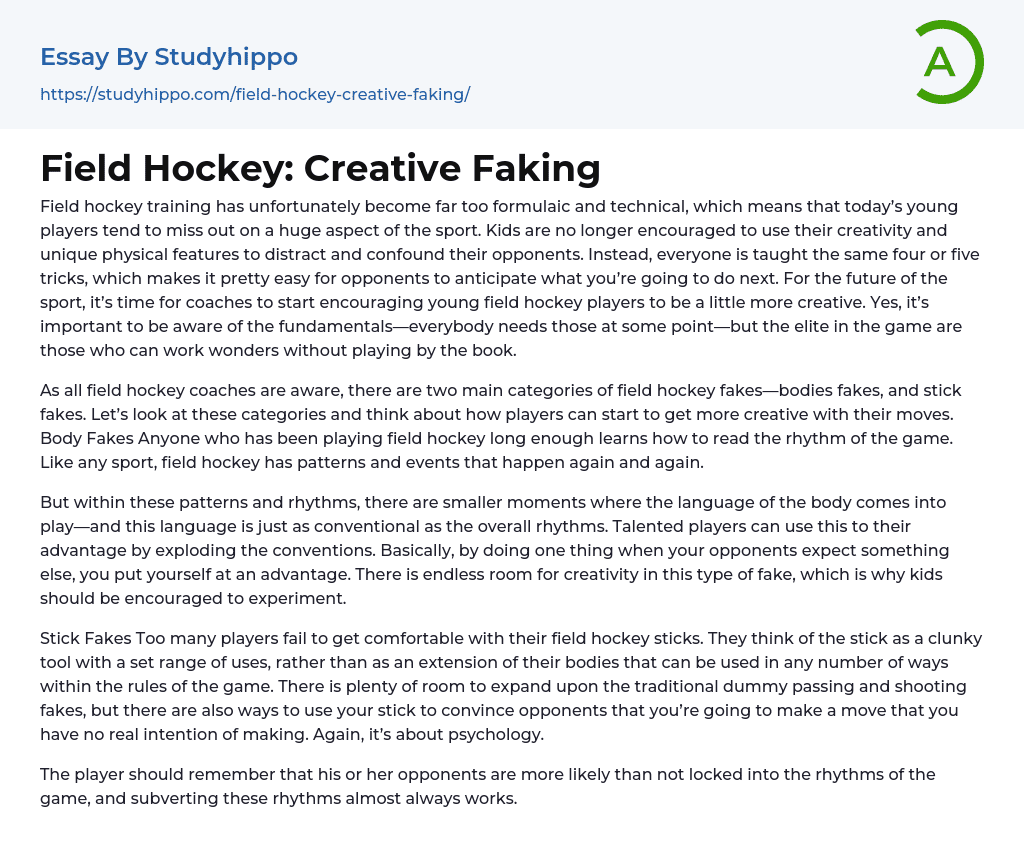Field hockey training has unfortunately become far too formulaic and technical, which means that today’s young players tend to miss out on a huge aspect of the sport. Kids are no longer encouraged to use their creativity and unique physical features to distract and confound their opponents. Instead, everyone is taught the same four or five tricks, which makes it pretty easy for opponents to anticipate what you’re going to do next. For the future of the sport, it’s time for coaches to start encouraging young field hockey players to be a little more creative. Yes, it’s important to be aware of the fundamentals—everybody needs those at some point—but the elite in the game are those who can work wonders without playing by the book.
As all field hockey coaches are aware, there are two main categories
...of field hockey fakes—bodies fakes, and stick fakes. Let’s look at these categories and think about how players can start to get more creative with their moves. Body Fakes Anyone who has been playing field hockey long enough learns how to read the rhythm of the game. Like any sport, field hockey has patterns and events that happen again and again.
But within these patterns and rhythms, there are smaller moments where the language of the body comes into play—and this language is just as conventional as the overall rhythms. Talented players can use this to their advantage by exploding the conventions. Basically, by doing one thing when your opponents expect something else, you put yourself at an advantage. There is endless room for creativity in this type of fake, which is why kids should be encouraged to
experiment.
Stick Fakes Too many players fail to get comfortable with their field hockey sticks. They think of the stick as a clunky tool with a set range of uses, rather than as an extension of their bodies that can be used in any number of ways within the rules of the game. There is plenty of room to expand upon the traditional dummy passing and shooting fakes, but there are also ways to use your stick to convince opponents that you’re going to make a move that you have no real intention of making. Again, it’s about psychology.
The player should remember that his or her opponents are more likely than not locked into the rhythms of the game, and subverting these rhythms almost always works.
- American Football essays
- Athletes essays
- Athletic Shoe essays
- badminton essays
- Baseball essays
- Basketball essays
- Benefits of Exercise essays
- Bodybuilding essays
- Boxing essays
- cricket essays
- Fight club essays
- Football essays
- go kart essays
- Golf essays
- Gym essays
- hockey essays
- Martial Arts essays
- Motorcycle essays
- Olympic Games essays
- Running essays
- scuba diving essays
- Ski essays
- snowboarding essays
- Soccer essays
- Sportsmanship essays
- Super Bowl essays
- Surfing essays
- Swimming essays
- Table tennis essays
- Taekwondo essays
- Tennis essays
- Training essays
- Volleyball essays
- wrestling essays
- Yoga essays




